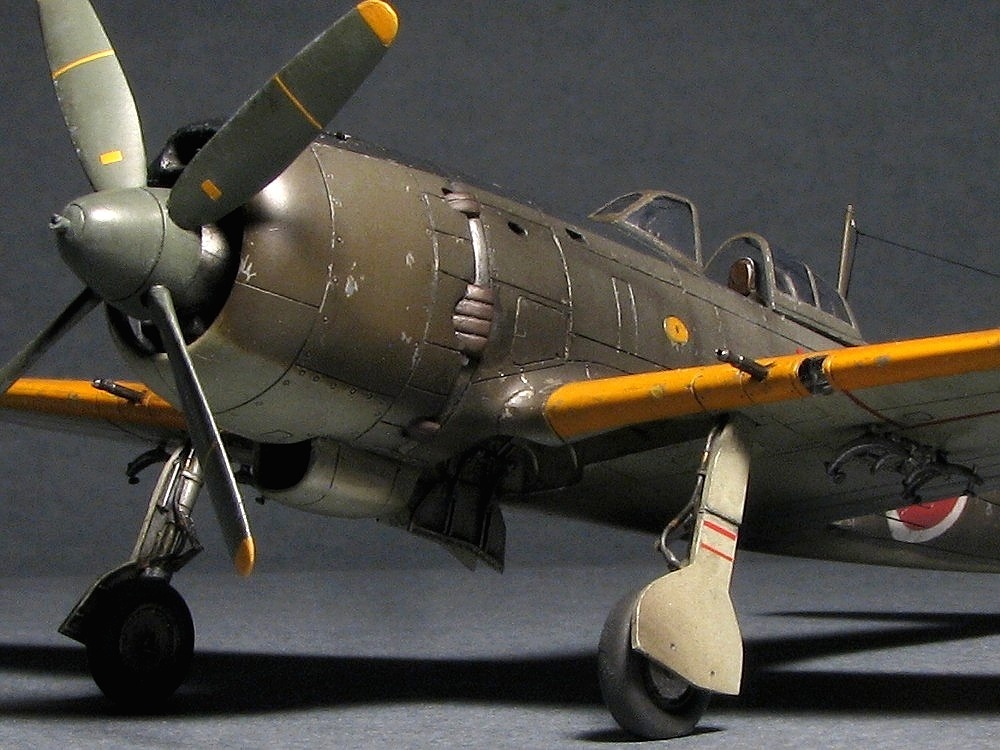
Nakajima Ki84 Army Type 4 Fighter Hayate Drawings
 |
Go To 1/72 Hasegawa Modeling Note
|
These drawings are |
|
|
 This photo was taken from a long distance enough and from right beside. So, this is the best photo for the outline shape. This picture is mirror-reversed image. |
 This photo was taken from right beside and clear. But it was taken from close range (approx 20 yd). I used this for details. |
 This photo was taken from right beside the tail fin. So this was helpful for the shape of the tail. Be aware that the rudder was not neutral. So the rudder chord looks like short. |
 This photo was taken from right beside the nose. This aircraft became only existing aircraft. |
 This photo looks like a good shot for drawings at first view. But, it might be distorted by an unknown factor. The cowl is too long and the spinner is short. The rear fuselage is short but the fin is wide. |
|
If you feel a sense of discomfort when you look at above photos, you have great eyes. As a matter of fact, these four photos with the exception of the first photo were removed perspective distortion using image modification software ( free software GIMP2 ).
In such a case, I usually use station diagrams of the fuselage. Hayate's station is described in ref.-4 "Aero Details 24" of Dainippon-Kaiga. But, they were not match to photos of actual aircraft when they were superimposed. On the other hand, USAF measured the captured Hayate as 32.3 ft (=9,850mm) (ref.-5). In addition, another reference describes that the length from the wing leading edge to rudder hinge is 9,070mm and this value was written in the official manual. This value is not match to station diagrams. Mmm.. What should I do?
|
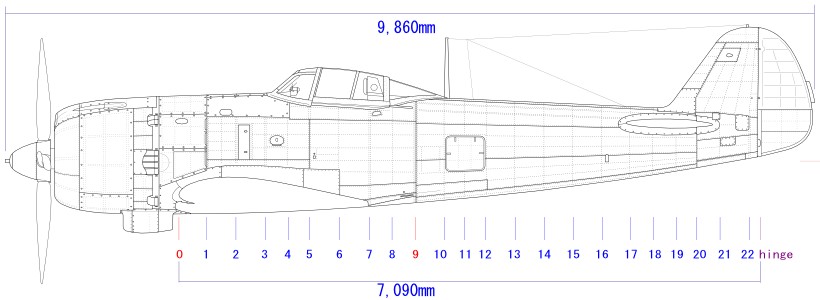 |
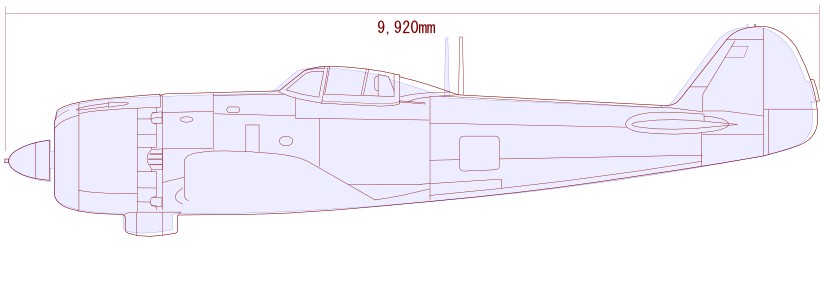 Purple lines of the lower figure are one of existing drawing. Pale blue is my drawing. |
|
I considered about 9,740mm and 9,920mm. |
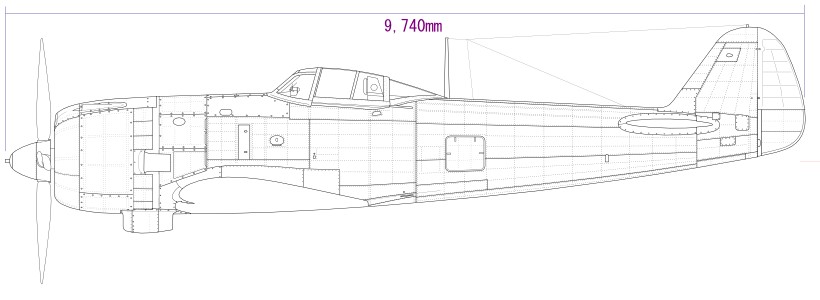 The rudder is replaced with the rudder frame drawing in ref.-4. The total length became 9,740mm. I guess that this style might be the trial production. |
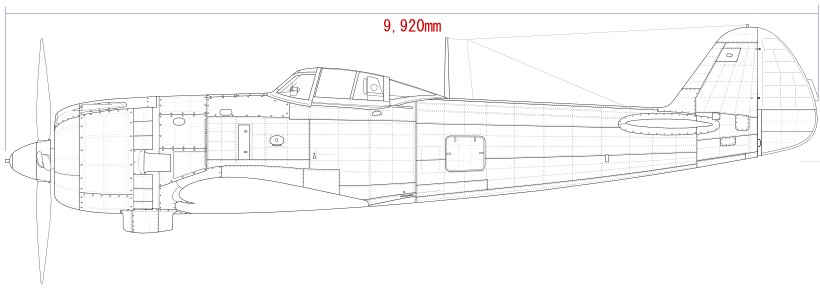 The rudder is extended to become 9,920mm total length. This figure looks like increasing trial production. |
|
Finally, my drawings is superimposed on the first photo. |
 |
|
Original photos should be removed perspective distortion when they are used in drawing works. For example, as for the following picture, the cowl was seen from rearward, so vertical panel lines and the leading edge of cowl move away. |
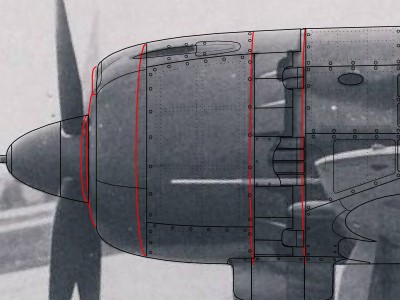 |
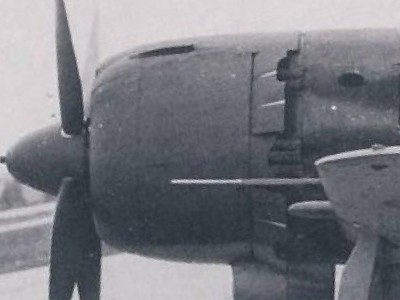 |
|
Following color photos are restored aircraft of Chiran Museum. The monotone photo is WW2 original. |
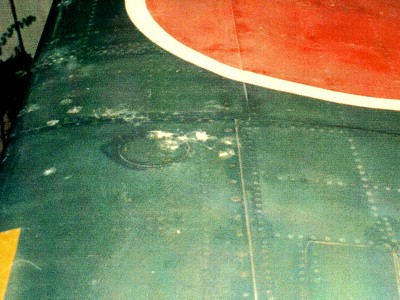 The wing fuel tank cap is circle shape. Double rivet lines can be seen on the tank. |
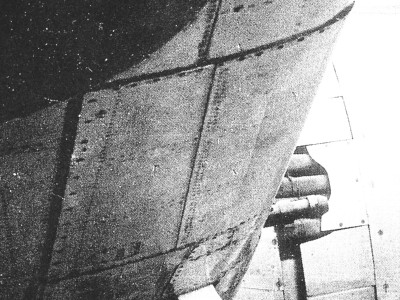 There are two set of these double rivet lines on the tank. The panel line parallel to the leading edge is only lower side. |
|
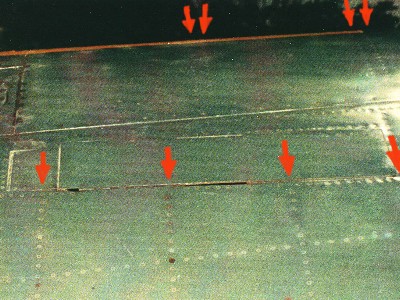 Numbers and positions of tank and wing ribs are different. |
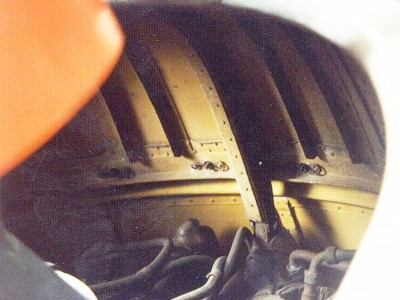 This photo shows the port inside of front cowl. The left is upside, the right is downside. |
|
|
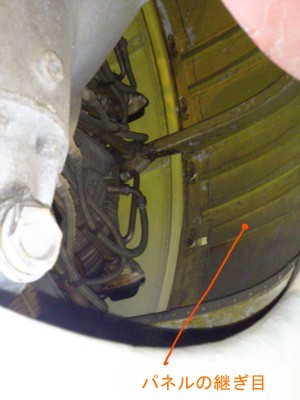 |
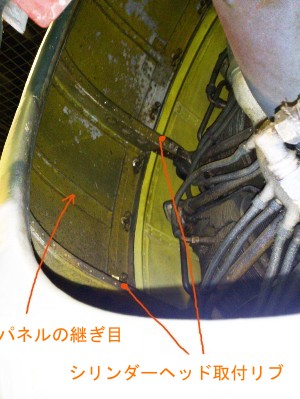 |
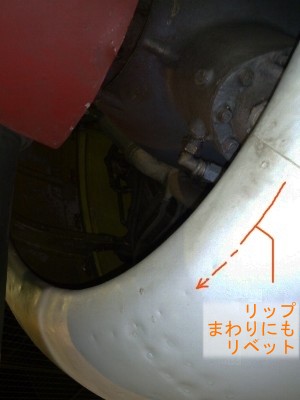 |
|
http://geta-o.jp/WB/P&F/HAYATE/WB-HAYATE.html |
| 1 | Famous Airplanes Of The World No.19 Army Type 4 Fighter Hayate | - | Bunrin-do |
| 2 | Famous Airplanes Of The World (old edition) No.20 Type 4 Fighter Hayate Oct. 1971 | - | Bunrin-do |
| 3 | History of Pacific Warfare Series 46 Type 4 Fighter Hayate | 4-05-603574-1 | Gakken |
| 4 | Aero Detail No.24 Nakajima Type 4 Fighter Hayate | 4-499-22684-8 | Dainippon-kaiga |
| 5 | Military Aircraft Mechanical Series No.7 Hayate / Type 97 Heavy Bomber / Type 2 Flying Boat | 4-7698-0637-X | Kojin-sha |
| 6 | Model Art Extra Edition No.283 IJA Type 4 Fighter Hayate | - | Model Art |
| 7 | Model Art Extra Edition No.493 Nakajima Type 4 Fighter Hayate | - | Model Art |
| 8 | T-2 Report on Frank-1(Ki-84),T-2 Serial No.302 Interim Report No.3 | - | Headquarters Air Materiel Command |
Go To 1/72 Hasegawa Modeling Note